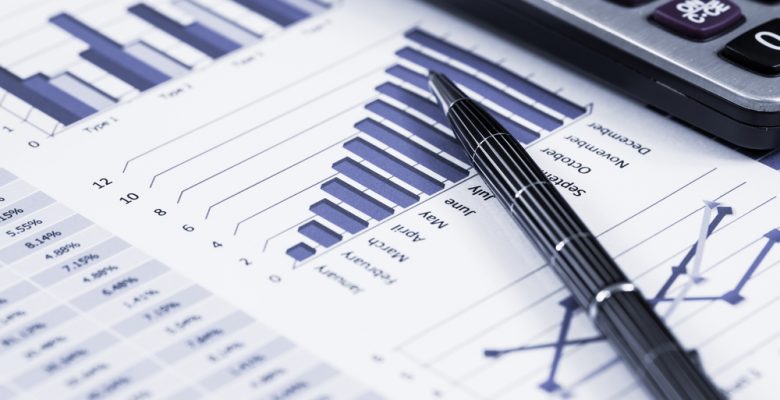Why Management Accounts are a key tool for Business Growth and Success
As a business owner, you may have heard of management accounts and wondered what they are and why they are important. In this blog, we explain what management accounts are, why they are essential for business growth and success, the benefits of management accounts, the key components of management accounts, how to use management accounts for decision-making, and the difference between management accounts and financial accounts.
Introduction to Management Accounts
Management accounts are financial reports prepared for the internal use of owners/management to provide timely and accurate financial information for decision-making. Unlike financial accounts, which are prepared for external stakeholders such as investors, lenders, and HMRC, management accounts are tailored to meet the specific needs of owners/management.
The purpose of management accounts is to provide you with the information you need to make informed decisions about the business. This information includes both financial and non-financial data, such as sales figures, expenses, customer data, and employee data. The information is presented in a format that is easy to understand and analyse, allowing you to quickly identify trends and make strategic decisions.
What are Management Accounts?
Management accounts are financial reports that are typically prepared on a monthly, quarterly, or annual basis and are used to monitor the financial performance of the business.
The information included in management accounts can vary depending on the needs of the business. However, they typically include:
- Income statement
- Balance sheet
- Cash flow statement
- Sales data
- Expenses data
- Customer data
- Employee data
The purpose of management accounts is to provide you with the information you need to identify areas of the business that require attention and to make strategic decisions that will improve the financial performance of the business.
Benefits of Management Accounts
There are many benefits of using management accounts in your business. Some of these benefits include:
Timely and Accurate Information
Management accounts provide timely and accurate financial information that you can use to make informed decisions about the business. By having access to up-to-date information, you can quickly identify trends and make strategic decisions based on the very latest information.
Improved Decision-Making
By using management accounts, you can make informed decisions about the business. This includes decisions about investing in new products or services, expanding into new markets, hiring new employees, or reducing expenses. By making informed decisions, you can improve the financial performance of the business and drive growth.
Increased Transparency
Management accounts provide transparency into the financial performance of the business. This allows stakeholders to see how the business is performing and to identify areas of the business that require attention.
Better Financial Planning
By using management accounts, you can better plan for the future financial performance of the business. This includes forecasting sales, expenses, and cash flow, and identifying potential risks and opportunities.
Key Components of Management Accounts
The key components of management accounts include:
Income Statement
The income statement provides information about the revenue and expenses of the business. This includes sales revenue, cost of goods sold, and operating expenses.
Balance Sheet
The balance sheet provides information about the assets, liabilities, and equity of the business. This includes cash, accounts receivable, inventory, accounts payable, and long-term debt.
Cash Flow Statement
The cash flow statement provides information about the cash inflows and outflows of the business. This includes cash from operating activities, investing activities, and financing activities.
Sales Data
Sales data includes information about the sales revenue of the business. This includes information about the volume of sales, the price of goods or services sold, and the cost of goods or services sold.
Expenses Data
Expenses data includes information about the expenses of the business. This includes information about the cost of goods or services sold, operating expenses, and overhead expenses.
Customer Data
Customer data includes information about the customers of the business. This includes information about customer demographics, customer behavior, and customer satisfaction.
Employee Data
Employee data includes information about the employees of the business. This includes information about employee demographics, employee performance, and employee satisfaction.
How to Use Management Accounts for Decision-Making
To use management accounts for decision-making, you should follow these steps:
Step 1: Review the Financial Statements
The first step in using management accounts for decision-making is to review the financial statements. This includes the income statement, balance sheet, and cash flow statement. By reviewing these statements, you can identify trends and areas of the business that require attention.
Step 2: Analyse the Data
The second step in using management accounts for decision-making is to analyse the data. This includes comparing the financial statements to previous periods, identifying trends, and calculating financial ratios. By analysing the data, you can gain a deeper understanding of the financial performance of the business.
Step 3: Identify the Problem
The third step in using management accounts for decision-making is to identify the problem. This includes identifying areas of the business that require attention, such as declining sales or increasing expenses.
Step 4: Develop a Plan
The fourth step in using management accounts for decision-making is to develop a plan. This includes identifying potential solutions to the problem and developing a strategy to implement the solution.
Step 5: Monitor the Results
The fifth step in using management accounts for decision-making is to monitor the results. This includes tracking the implementation of the plan and measuring the results. By monitoring the results, you can determine whether the plan was successful or whether additional changes are required.
What we do at WCL:
We take you on the above journey, by holding regular meetings to discuss the reports, presentations to the board, provide reports with graphs and interpretation of the data to help you understand the numbers.
Conclusion: Why Every Business Needs Management Accounts
In conclusion, management accounts are essential for business growth and success. They provide you with the information needed to make informed decisions about the business, improve financial performance, and drive growth. By using management accounts, you can track the financial performance of the business, identify areas of the business that require attention, and make strategic decisions that will improve the financial performance of the business. Every business, regardless of size or industry, should have management accounts in place to ensure the long-term success of the business.
If you would like to find out more, please get in touch. We’d love to hear from you.





